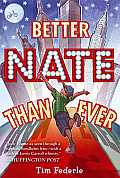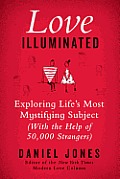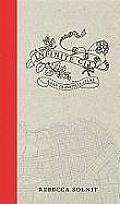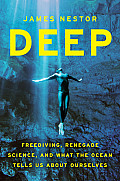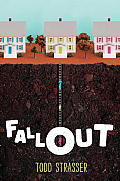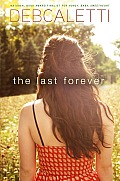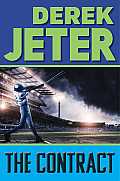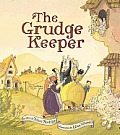Link to this review in the form of a comic strip by billba tagged coming of age
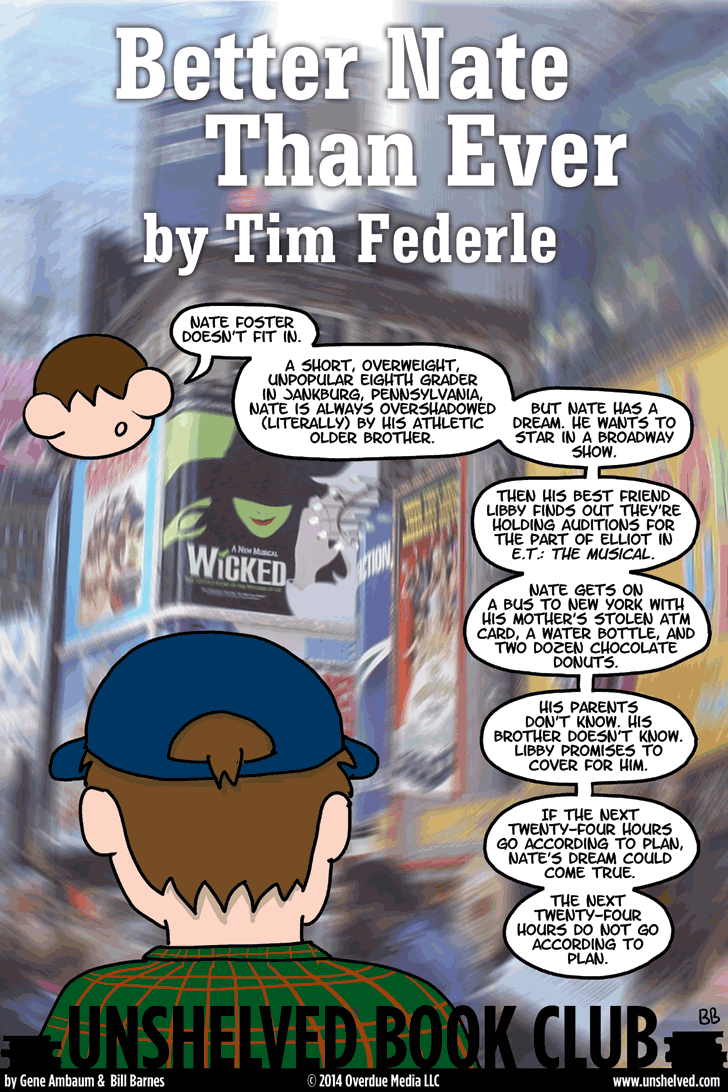
Click for the full-sized comic
@bookblurb Middle schooler Nate has always wanted to star in a broadway show. He escapes to NY to audition for E.T. The Musical.
Link to this review by emilyreads tagged essays • nonfiction
Daniel Jones has edited the “Modern Love” column in the New York Times since its inception in 2004. This book, culled from dozens of column entries over the past decade, crystallizes and highlights some of the common threads of contemporary American love and romance. How has online dating changed the way we seek and evaluate potential mates? How can smart people be fooled by romantic con men (and women)? How can we break the monotony of monogamy without crossing into infidelity? Jones uses past columns as case studies to explore how, when, and why we fall in and out of love.
Why I picked it up: Though I’d deny it if you asked me outright, I am a sucker for advice columns, especially of the love-and-marriage variety. My husband and I have been together longer than we haven’t, so I have to get my relationship kicks vicariously.
Why I finished it: Jones’s prose is sympathetic and snappy. Describing our collective tendency to avoid feeling vulnerable by adopting a position of indifference, he writes, “[A]cting aloof is so common these days that sincerity and vulnerability, for many, can start to feel disgusting and unnatural, like wearing a suit when everyone else is dressed in ripped shorts and sandals.”
It’s perfect for: Armchair advice columnists, friends stuck in dating purgatory, and anyone who’s ever wondered, “At what point in this relationship should I show her my prosthetic leg?”
@bookblurb Highlights from Daniel Jones’s “Modern Love” column about love and romance in contemporary America.
Link to this review by wally tagged art • essays • nonfiction
Essayist Rebecca Solnit, working with different cartographers, artists, and writers, looks at San Francisco through twenty-two unique maps with accompanying essays. The first essay “The Names before the Names,” lays the groundwork along with a map of San Francisco circa 1769 which shows a scattering of Spanish missions and a wide distribution of various tribes. The author explains how the tribes named one another. Yelamu meant “northerners” to one group and “westerners” to another because of their relationship geographically. It was the missionaries who chose fixed names to designate a people and ignored their relational context. Other essays and maps are just as fascinating: one overlays the life of Eadweard Muybridge (a pioneer of moving pictures who lived in the city), Alfred Hitchcock’s love letter to San Francisco (Vertigo), and all the movie theaters in the city in 1958 (the film’s release date). The author describes Muybridge’s storied life in San Francisco, including a murder trial that sent him into exile to Central America where he figured out some key elements in film-making. Another juxtaposes Superfund sites and the locations of major chemical companies with locavore ranches and wineries.
Why I picked it up: Solnit is one of my favorite essayists, and San Francisco is one of my favorite cities. I’ve read this book several times, and had to pick it up again.
Why I finished it: I love maps, too. The maps in this book start from the idea that they are inherently subjective and cannot possibly cover their territory. These have provoked my thinking for the last few years as I explored my home (Seattle) and other cities. The map that held my attention this time is “Death and Beauty.” It depicts all of 2008’s ninety-nine murders along with a large number of Monterey cypresses, the largest native tree in the area. Red dots (murders) appear more towards the east side of the city, while green dots (trees) gather out west. The separation of the two sets of dots intrigued me.
It’s perfect for: Julie. She works in the courts in downtown San Francisco, and she would really like “Truth to Power,” about the history of race and (in)justice in the heart of downtown. It begins with cheap Chinese labor used to build railroads and the fabulously wealthy rail barons whose names dot Nob Hill, then continuing on through the story of Jim Thorpe, the Native American Olympian who defeated Avery Brundage. Brundage later became a wealthy businessman and, as head of the IOC, stripped Thorpe of his medals.
@bookblurb Cartographers, artists, and writers show views of San Francisco through unique maps and essays.
Link to this review by flemtastic tagged science • nonfiction
In 2011, James Nestor, a writer for Outside magazine, was sent to cover the Individual Depth World Championships, a biennial freediving competition. He saw divers descend hundreds of feet underwater without the aid of air tanks or weights. Some fell unconscious and had to be rescued by safety divers. A few went into cardiac arrest on the way up. Others had seizures and bloody noses when they surfaced.
Fascinated by what drove these competitors, Nestor continued to research the origins and rules of the sport. This took him around the world to swim with man-eating sharks, gigantic whales, and chattering dolphins. Some research scientists use freediving to gather data; Nestor trained in freediving himself and then joined them in the water as they swam with whales, dolphins, and sharks.
Why I picked it up: I once watched a documentary about freediving. The main subject of the documentary died. I remember wondering what motivated him. I thought I’d find out by reading this book.
Why I finished it: Nestor’s clear regard for the mysteries of open water, and especially deep water, leached into me over the course of the book. The deep ocean is the most unexplored and little understood area on Earth, so any peek of what it’s like there is compelling.
I also enjoyed learning about the mental side of breath holding. Divers must be in the right mental space to perform well. The urge to breathe that comes at what the diver believes is the end of his breath holding is caused by a buildup of carbon dioxide in the lungs, not a biological imperative to take in oxygen. Divers can push past this urge without harm to the body for a short period of time.
There was also a lot of information on sperm whale clicks, which the whales use for echolocation and communication. These clicks can be heard for hundreds of miles underwater. Sperm whales are the loudest animal in the world at 236 decibels. That’s louder than the space shuttle taking off from 250 feet away!
It’s perfect for: My friend Rick, a librarian, who has taken trips with his church to Roatán to build houses. Part of the book takes place there, where a strange man has built a submersible that can take passengers to several thousand feet underwater. If Rick goes back, maybe he’ll be inspired to take a ride to a depth of 2,500 feet, a dive that would be illegal in the United States because the homemade sub is uncertified.
@bookblurb An exploration of the origins, rules, and dangers of freediving.
Link to this review by danritchie tagged historical fiction • coming of age
In the summer of 1962, nuclear war is on everyone’s mind. Sixth-grader Scott’s dad is the only one who decides to prepare. As the neighborhood scoffs at him, he builds an underground bomb shelter.
Then, on a chilly October night, when Scott and his brother Sparky are rousted out of bed by their dad, they know the unthinkable has happened. Along with their mom and a sleep over babysitter, Janet, they open the lead trapdoor in the playroom and climb down into the bomb shelter. Most of the neighbors who mocked it try to force their way in. The next door neighbors, the Shaws, their son Ronnie (Scott’s best friend) as well as his classmate Paula and her dad manage to get in before Scott’s dad closes the trapdoor. In the melee, Scott’s mom is knocked unconscious.
Dressed only in nightclothes, with inadequate supplies for the number of people in the shelter, the survivors face a terrifying, physically draining and emotional road to survival. And if they make it, what is waiting for them outside?
Why I picked it up: I had read that Strasser wrote this story after revisiting his childhood home and the memories of the summer of 1962. I was about the same age as Scott that year, and grew up under the threat of nuclear war, so I was excited to read his story of growing up in fear.
Why I finished it: When construction of the shelter begins, the dynamics of Scott’s family and his relationships with his friends changes. His parents quarrel more, and his mom becomes withdrawn, moody, and angry. The brothers’ innocence is forever compromised by the fear of the Soviet Union and the threat of spreading communism.
And then, after everyone is in the shelter, Scott sees and tries to cope with the adults’ dark side: to conserve food, Paula’s dad wants to throw out Scott’s comatose mother along with Janet, the sitter, because she’s black. What little hope they share is tempered by the fear of what will happen when they have to leave.
It’s perfect for: Today’s teens who are growing up with a fear of terrorism. They will relate to how those of us who grew up during the Cold War tried to imagine what would happen when the bombs started falling. The nagging, constant uncertainty that sticks with Scott and his friends is exactly what I remember feeling.
@bookblurb In 1962, Scott’s dad builds a bomb shelter. The neighbors mock him until the night they need it.
Link to this review by darcy tagged coming of age
After her mother’s death, Tessa’s dad takes her on an impromptu road trip and leaves her with a grandmother she hasn’t seen in years.
Why I picked it up: I love the poetic quality of Caletti’s books and couldn’t wait to pick up another. She never disappoints.
Why I finished it: After Tessa’s father drops her off on a small island in Washington state, he leaves and she feels completely abandoned. Through the weeks she stops returning texts and calls to her best friend and boyfriend back in California because she is completely lost. Then she meets Henry, who works at the local library, and a romance begins. (Caletti is a power user at my local library, and her descriptions of the stacks as a haven felt exactly right.)
It’s perfect for: My neighbor, Kristin, who has the best garden on the block. Tessa’s last connection to her mother is a rare plant that she takes with her on the road. As it starts to wither, Tessa becomes obsessed with saving it, but there isn’t enough information on the web or at the library. And I know that Kristin will appreciate the opening to each chapter, which is an encyclopedic entry describing a plant — she often acts as my personal plant encyclopedia when I have a gardening disaster.
@bookblurb After her mom dies, Tessa's dad abandons her with a grandmother she hasn’t seen in years.
Link to this review by geneambaum tagged comic strips • humor
NSFW comics featuring profanity, urination, poop, murder, relationships, awkward moments, and other funny notes to self, all reproduced in glorious black and white.
Contains comics published between 2/13/08 and 10/14/09 at channelate.com.
Why I picked it up: At the Emerald City Comic Con, I noticed Ryan’s colorful, more recent channelATE collections at his booth. I started thumbing through them, and I noticed that when I got to this one, he cringed.
Why I finished it: When Ryan signed it for me, he wrote, “Gene, it kills me to watch you read this!” That felt like a double-dog dare, so I had to.
I laughed, I laughed so hard I cried, and I really enjoyed watching Ryan get better over the course of the year-and-a-half that these strips ran. (I also admire that he’s a little sick and not afraid to show it.) I went back the next day and bought his most recent collection, places to visit before you die.
Readalikes: Hudson’s drawings are minimalistic but somehow perfect for his tone. They remind me of The Oatmeal, xkcd, and, of course, the famously tasteless comics of Hugleikur Dagsson.
@bookblurb NSFW collection of channelATE comic strips that are often perverse, scatological, and introspective.
Link to this review by flemtastic tagged chapter book • biography
The first in a series of ten books from Jeter Publishing, each a roughly autobiographical story imparting a value Derek Jeter wants to pass on to kids. Third-grade Derek lovingly writes a paper about his dreams for the future, but his teacher returns it, saying that she wants him to write about a more realistic dream than playing shortstop for the New York Yankees. Derek talks with his parents and they agree to support him as long as he is willing to do the work required to meet his goal. The problem is that his local Little League placed him on the weak Detroit Tigers team while other able players were assigned to the powerful New York Yankees squad. The Tigers’ coach puts his own smugly superior kid at shortstop, relegating Derek to second base. Derek, frustrated that he doesn’t have a chance to change things through his play, will have to see if he and his teammates can turn things around in time to challenge the mighty Yankees.
Why I picked it up: I wanted to see if this was just vanity publishing or if it could actually work.
Why I finished it: After sending all three of my sons through Little League, I still have fond memories of coaching and attempting to slaughter all of the other teams with aggressive base-running. Jeter’s memories and Paul Mantell’s writing make for a very realistic, dramatic story that never descends into Hallmark Channel sentimentality.
It’s perfect for: Fans of Matt Christopher’s baseball books. I will be buying the box set of all ten of these to give to my future grandsons when they get into Little League. The baseball scenes are sure to get grade-school boys’ pulses racing.
@bookblurb Young Derek Jeter writes a paper about his dream of becoming a NY Yankee. His teacher says it’s too unrealistic.
Link to this review by geneambaum tagged picture book
In Bonnyripple, everyone gives their grudges to Cornelius to keep in his cottage. Then a strong wind comes through town, scattering and jumbling them (and burying Cornelius). Everyone arrives at the huge mound of grudges and starts pushing and shouting.
Why I picked it up: Michael Rockliff at Workman sent me a copy. He always makes good recommendations, even when he is a little biased (Mara is his daughter).
Why I finished it: The drawings have a lot of life. From goats eating flowers, to Cornelius trying to find space to file grudges, to the wind sweeping the papers out the chimneys and into the sky, it’s a beautiful book.
It’s perfect for: You, if you’re still mad at me about something. I’m not sure what I did, but maybe you’ll be inspired by the way the townsfolk let go of their major huffs, petty snits, and dust-ups and give me another chance. And for Sophie, who loves my cats and would enjoy following Elvira’s cat throughout the book, from when it’s being pulled into the air to when it’s riding the goat.
@bookblurb Everyone gives their grudges to Cornelius. Then a strong wind scatters them.
